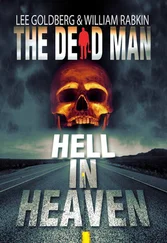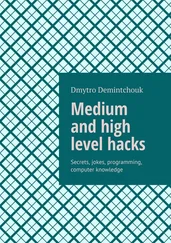Just as I lost sight of Parker, I heard the CAR-15 go off, all thirty rounds in a sustained burst. Parker came running around the mound for all he was worth and dove head first into the gunner’s compartment. “Get out of here, sir, NOWl He’s not dead!”
I pulled pitch and squeezed the gun trigger to the four thousand rounds per minute stop. The OH-6 shuddered as it spewed tracers and clawed for altitude. The tongue of fire raked over the soldier’s body and blew dust and debris across my windscreen.
“What the hell happened back there?”
Parket was panting. “The bastard had an RPG round in his hand when I came around the corner. His eyes were closed, the bastard looked dead to me, but as I walked up close to him, he opened his eyes. His left arm was blown away, but he had this RPG round in his right hand. And when I got up close to him he picked the RPG round up and slammed it into the ground, picked it up, and did it again. The son of a bitch tried to blow me up!”
Ground troops from the security forces were arriving, now cautious at our recent outburst of fire. They came around their APC, weapons at the ready. Before getting too close to the body, one infantryman took a couple of insurance shots to make sure the VC was dead and wouldn’t try to detonate the RPG round still tightly gripped in his hand.
Parker and I were watching from a nearby orbit as the grunts carefully removed the map case and took it back to the M-l 13. Then the officer in the personnel carrier called on FM. “Jackpot, One Six. Charlie was an officer type. We’ve got maps, and we’ve got operational overlays. Looks like good stuff for G-2. Thanks for finding this dude. Your crew chief OK?”
“OK, thanks,” I came back. “Crew chief is OK, other than what I might do to him for shooting up all my CAR-15 ammo into Victor Charlie. You’ll get the map case contents back to Brigade?”
“This is really good intel, One Six. From a quick look at these overlays, it looks like the dinks who ambushed the convoy are headed back to their sanctuaries in the Fish Hook. As far as the map case contents, we’re tied up here for a little while. Can you get it down to Tango One [Thunder I Fire Base]? Then they’ll get it on back to division.”
“Roger, we’ll get it back to Tango One,” I answered.
That was Parker’s cue to cut back in on the intercom. “Horse shit, Lieutenant,” he said to me jokingly. “No disrespect intended, sir, but I don’t care what you say, I’m not getting out of this damn aircraft one more time to screw around with some dink’s map case!”
“Cool it, Jimbo,” I chuckled. “Don’t worry about the bad guy, he’s dead.”
“Well, no offense, Lieutenant, but I’d just as soon one of those grunts handle the map case while I stay to-hell inside this helicopter.”
Smiling to myself, I set the ship down next to the M-113, and one of the infantrymen brought me the map case. I didn’t even have to ask Parker to get it.
That day, 21 July 1969, ended up being a pretty short flying day for Parker and me. We ran the map case on down to Thunder I, turned it over to the brigade S-2, and headed back to Phu Loi. As I cruised leisurely back to base, I wondered again if my decision eighteen months before had been a good one.
Fort Knox, Kentucky, 1967
I pressed my way up to the Echo Company bulletin board to see what everybody was reading. Just pinned up, the notice said that the army was looking for more rotary-wing aviators and that interested officer candidates who qualified would be given the opportunity to go on to army flight school after completing officer candidate school (OCS).
I was interested enough to reread the last part. It said that any candidate wishing to pursue aviator training had to submit to an orientation flight in an army helicopter to be conducted from the Fort Knox airfield on a specified future date. I had never considered being a pilot, but taking an army helicopter ride didn’t sound too bad.
The only problem was getting the time off to do it. We were about mid-course in OCS training at the armor school and our schedules were hectic. But between field problems, inspections, getting demerits, and working off demerits, I signed up.
I had never ridden in a helicopter. I hadn’t even seen many of them down around Hot Springs, Arkansas, where I grew up. Before enlisting in the army, I had belonged to a sport parachuting club. We jumped, of course, from small, propeller-type airplanes, so the concept of being off the ground and flying wasn’t all that new to me.
But flying helicopters? The prospect had never occurred to me. Yet becoming an armor officer candidate at Fort Knox, Kentucky, really hadn’t been in my plans, either.
I had enlisted on 1 February 1967 after one semester of college, with the specific objective of becoming an army airborne infantryman. During basic training at Fort Polk, Louisiana, I decided to go on to OCS. I still wanted the infantry branch but got my second choice, armor, instead.
When the appointed day came to take the army helicopter ride, I and another candidate who had indicated interest got our proper permissions, and off we went down to Fort Knox airfield. Reporting at the flight line, we were greeted by a young army captain. He introduced himself as the pilot who would be taking us on our orientation flight, then pointed over his shoulder to the little helicopter sitting on the ramp.
“That, gentlemen,” he said, “is the army Cayuse Model OH-6A observation helicopter. It is manufactured by Hughes Tool Company, Aircraft Division, and is basically an all-metal, single-engine, rotary-wing aircraft.”
The helicopter looked brand new. Its fresh olive-drab (OD) finish glistened in the sunlight, and was accented by a yellow number painted at the top of the fuselage and a big United States Army painted across the tail boom. But what most caught my attention was the distinctive shape of the little fuselage. It looked like a teardrop, with the cockpit located in the big end of the drop and the back cabin tapering to the tail of the aircraft.
“This helicopter model,” the captain continued, “is just now coming into the army’s inventory. This one’s just fresh out of the factory, in fact. And if you’ll come with me, we’ll get strapped in and take it for a little spin.”
As we walked toward the aircraft, the captain continued his enthusiastic but almost textbook description of the OH-6A. “It’s powered by an Allison T63-A-5A turbine engine,” he recited, “that drives both the four-bladed main rotor and the antitorque tail rotor.”
“What does the army use a helicopter like this for?” the other candidate asked.
The captain seemed glad for the question. “The OH-6A is primarily an observation helicopter—that’s what the ‘OH’ stands for. It’s mostly designed for doing reconnaissance work at very low level.”
As we got to the ship, the captain opened both the cockpit and rear cabin doors so we could look inside. “The pilot sits in the right front seat,” he explained, “and the copilot, or observer, as the case may be, sits in the left seat. That’s a little different from most airplanes you might be familiar with, and though I haven’t been to Nam, I understand that the reason has to do with the way the scout pilots fly their observation patterns in combat.”
The captain pointed to my fellow candidate. “OK, why don’t you sit up front with me in the copilot’s seat., .,” then, looking at me, “and, Candidate Mills, you can sit back here in the crew member’s seat on the first leg, then swap into the front when we fly back home.”
We eagerly climbed into the helicopter while the captain explained how to buckle up, and how the guy in the front seat should put on the flight helmet and plug his headset into the aircraft radios. I didn’t have a helmet in the back, but I’d get my turn.
Читать дальше












